 ‘A textured experience’ is how a friend, returning to Delhi after nearly two decades spent in various parts of the world, describes the city. Although it has been bestowed with numerous epithets, both complimentary and opprobrious—a melting pot of cultures, a medley of the old and new, a confluence of influences, a city with many layers, a city without soul, the crime capital, the unsafest city for women, no single description can do justice to the phenomenon that is Delhi.
‘A textured experience’ is how a friend, returning to Delhi after nearly two decades spent in various parts of the world, describes the city. Although it has been bestowed with numerous epithets, both complimentary and opprobrious—a melting pot of cultures, a medley of the old and new, a confluence of influences, a city with many layers, a city without soul, the crime capital, the unsafest city for women, no single description can do justice to the phenomenon that is Delhi.
The city has always had a certain glamour, making it the eternal target of both invaders from without as well as aspiring immigrants from within the country. The Iron Age, the Mauryas, the Guptas, the Tomars, the Lodhis, the Delhi Sultanates, the Mughals, the British Raj, and now, independent India—Delhi has seen it all and imbibed every change.
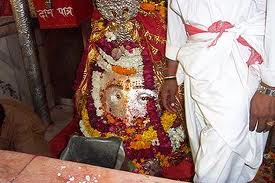 The site of seven historical cities, Delhi (probably an abbreviation of Dehleez, i.e., the gateway to the Gangetic Plain) is believed by historians to show signs of human habitation dating back to the second millennium BC, and to have been continuously inhabited since the 6th century BC. Indeed, apart from its numerous historical monuments, the city still has functional temple edifices like the ancient Kalkaji temple in South Delhi (3rd Century BC), the Jhandewalan mandir and the Pracheen Hanuman mandir (complete with a Pracheen Desi Ghee Prasad shop) that testify to its antiquity. On the other hand, it is also the site of the Baha’i Lotus temple, the ISKCON temple at Saket, the Chhatarpur temples and the Akshardham temple, all of which are less than a quarter of a century old! Co-existing with these are five star hotels, malls, theatres, pubs, discotheques, and the dhabas, roadside tea-stalls, barrows selling eggs and tea, chaat-wallas, modest restaurants, and hotels where trafficking in everything from drugs to humans is an open secret.
The site of seven historical cities, Delhi (probably an abbreviation of Dehleez, i.e., the gateway to the Gangetic Plain) is believed by historians to show signs of human habitation dating back to the second millennium BC, and to have been continuously inhabited since the 6th century BC. Indeed, apart from its numerous historical monuments, the city still has functional temple edifices like the ancient Kalkaji temple in South Delhi (3rd Century BC), the Jhandewalan mandir and the Pracheen Hanuman mandir (complete with a Pracheen Desi Ghee Prasad shop) that testify to its antiquity. On the other hand, it is also the site of the Baha’i Lotus temple, the ISKCON temple at Saket, the Chhatarpur temples and the Akshardham temple, all of which are less than a quarter of a century old! Co-existing with these are five star hotels, malls, theatres, pubs, discotheques, and the dhabas, roadside tea-stalls, barrows selling eggs and tea, chaat-wallas, modest restaurants, and hotels where trafficking in everything from drugs to humans is an open secret.
Venturing into gastronomic jargon, ‘a many-layered biryani’ perhaps comes closest to the character of this, one of the oldest, and yet, one of the most contemporary, cities in the world. These multitude of layers and textures are not however the sum total of this unique city though they reference its history and the absorbent character that takes unto itself all influences—positive or negative. So the city is nothing if not a constantly mutating and evolving entity.
Till half a century ago, a city of mud-booted immigrants, many of whom arrived from the rural Punjab region in the years after the 1947 Partition, Delhi was a sleepy capital whose gentility belied a penchant for intrigue and hustle. The Delhi of today is a multicultural cosmopolis, whose rapid development and urbanization, coupled with relatively high average incomes, has transformed it into a major cultural, political, and commercial centre of India, and the planet’s second-largest urban agglomeration, with 22 million people and India’s highest concentration of millionaires.
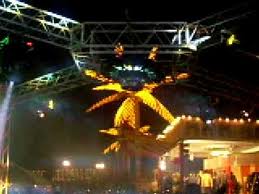 Today, the most obvious label is what I refer to as the ‘Page 3 Delhi’— a city of the stereotypically ostentatious nouveau riche, with black money and pink Bentleys, where talk of fortunes (made, spent, and lost) is constant and unabashed, and where your place on the social ladder is decided by the size of the solitaire your husband buys you—a Delhi where wealthy residents, apart from their palatial mansions in ‘posh localities’, maintain lavish vacation homes or ‘farmhouses’ in the city’s rural outskirts for luxurious weekends and extravagant birthday and wedding bashes.
Today, the most obvious label is what I refer to as the ‘Page 3 Delhi’— a city of the stereotypically ostentatious nouveau riche, with black money and pink Bentleys, where talk of fortunes (made, spent, and lost) is constant and unabashed, and where your place on the social ladder is decided by the size of the solitaire your husband buys you—a Delhi where wealthy residents, apart from their palatial mansions in ‘posh localities’, maintain lavish vacation homes or ‘farmhouses’ in the city’s rural outskirts for luxurious weekends and extravagant birthday and wedding bashes.
Another contrasting yet a parallel skein with this in-your-face affluence is the ‘khandaani’ Delhi of old money, pedigree and ‘class’—a Delhi where quiet, understated, expensive elegance is the order of the day; whose residents confine themselves to their cloistered haunts—Jor Bagh, Golf Links, Babar Lane, Chelmsford and Gymkhana clubs. A Delhi with generations of money whose culture is a hybrid of the influences of the court circles in the Mughal era and the British Raj; whose farmhouses are a far cry from vulgar ostentation and the last word in good taste; who disdain random splurging of money, value family heirlooms and confine themselves to designer originals in clothes.
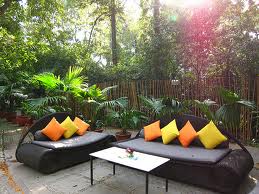 There is also the Delhi of defence and civil service professionals who generally occupy the sprawling government bungalows in the NDMC area of central Delhi and coexist with the Delhi of high profile intellectuals—both academic and political (the dividing line often becomes blurred), who are patrons of the arts, who frequent the Lalit Kala Academy, Triveni Kala Sangam, Kamani Auditorium, India International Centre, the Habitat Centre, art galleries, crafts exhibitions and museums and who, by virtue of their profile, constitute a sub-group of the ‘classy’ Delhi.
There is also the Delhi of defence and civil service professionals who generally occupy the sprawling government bungalows in the NDMC area of central Delhi and coexist with the Delhi of high profile intellectuals—both academic and political (the dividing line often becomes blurred), who are patrons of the arts, who frequent the Lalit Kala Academy, Triveni Kala Sangam, Kamani Auditorium, India International Centre, the Habitat Centre, art galleries, crafts exhibitions and museums and who, by virtue of their profile, constitute a sub-group of the ‘classy’ Delhi.
On the other end of the spectrum is what can be called the city’s underbelly—the burgeoning slums with their total absence of sanitation, hygiene or any kind of civic facilities that, apart from housing the rank poor: the beggars, unskilled daily wagers and domestic labour, are also hotbeds of crime and disease. Betwixt these two extremes of ‘haves’ and ‘have-nots’, exist the numerous other facets of Delhi.
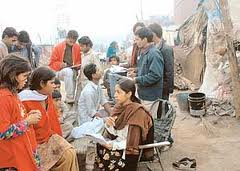 There is the Delhi of earnest, khadi-clad intellectuals and social workers who work for causes, and in NGOs and homes for the underprivileged, pouring out their hearts and souls into thankless tasks that pay them a pittance, endeavouring to alleviate the ills of the city (and the country); who lead pickets and demonstrations at Jantar Mantar and make inflammatory speeches in an effort to rouse the world into action.
There is the Delhi of earnest, khadi-clad intellectuals and social workers who work for causes, and in NGOs and homes for the underprivileged, pouring out their hearts and souls into thankless tasks that pay them a pittance, endeavouring to alleviate the ills of the city (and the country); who lead pickets and demonstrations at Jantar Mantar and make inflammatory speeches in an effort to rouse the world into action.
Another facet is the Delhi of the upper middle class and the ‘yuppies’ (young urban professionals, once disparagingly called ‘Punjabi urban professionals’ or ‘puppies’, but no longer confined to any one community, and now also encompassing upcoming business persons), on the make by any means that come their way. They collect professional degrees and diplomas and aspire to coffee-table book lifestyles, ever larger cars, bigger homes, costlier clothes 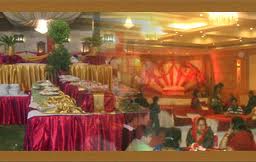 and vacations, trendier accessories, expensive boarding schools or coaching classes for their kids, daily trips to malls and movie theatres, regular weekend parties at pubs and ‘swinging’ joints, and, as they grow older, frequent trips to fashionable health resorts.
and vacations, trendier accessories, expensive boarding schools or coaching classes for their kids, daily trips to malls and movie theatres, regular weekend parties at pubs and ‘swinging’ joints, and, as they grow older, frequent trips to fashionable health resorts.
And then there is the Delhi of the ‘middle class’, trying to incorporate the demands and influences of contemporary lifestyles into traditional values and moralities, struggling to accommodate the burgeoning needs of the young into precariously balanced budgets in the everlasting battle against inflation and ‘corrupting influences’.
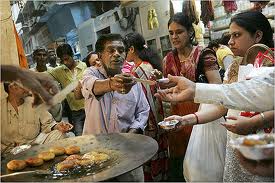 There is also the Delhi of the ‘purana Dilliwalas’—residents of the walled city who may have now relocated to the outlying areas of the city to escape the congestion in Chandni Chowk, Darya Ganj, Fatehpuri. These are people who still revel in their traditional lifestyles and hold culinary sway over traditional cuisine. Amongst all these are many other Delhis, too intangible for concrete classification, but existing nevertheless.
There is also the Delhi of the ‘purana Dilliwalas’—residents of the walled city who may have now relocated to the outlying areas of the city to escape the congestion in Chandni Chowk, Darya Ganj, Fatehpuri. These are people who still revel in their traditional lifestyles and hold culinary sway over traditional cuisine. Amongst all these are many other Delhis, too intangible for concrete classification, but existing nevertheless.
It is no wonder then that visitors to Delhi often tend to feel alienated initially. However, the entirely flexible character of the city ensures that they soon shake down and find, or create, a comfort zone of their own. And as for Delhiites, past and present, the city claims them for its own, despite all that is changing, unfamiliar and at times intimidating—like an old shoe that, in spite of pinching at expected (and sometimes unexpected) spots, is nevertheless, inexpressibly comforting.





